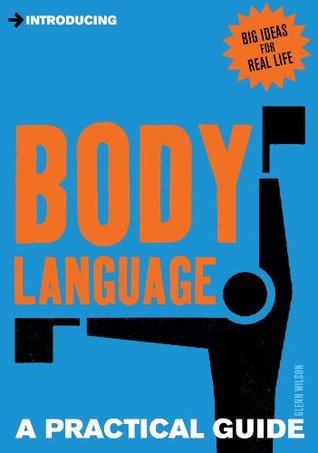More on this book
Kindle Notes & Highlights
by
Glenn Wilson
attitudes and intentions are better read through body language.
we have a most expressive face that has developed in connection with our preferred front-on interaction. Powerful signals are transmitted by facial expressions.
we quite rightly set greater store by what we see, rather than what we are being told.
body language ‘leaks’ certain emotions and attitudes that we might have preferred to conceal from those who observe
93% of our communication is through body language, while only 7% is based in the words themselves.
‘Disgust’ literally means rejecting something that is foul tasting.
the reading of body language is a natural human function.
Body language is rooted in our animal past. It is largely transmitted and read unconsciously. It can be subsequently broken down and analysed but the registration is more immediate than that. It is processed by brain modules that have evolved because they aid survival.
Where body language conflicts with the words that are being said, the body language will usually be the more ‘truthful’ in the sense of revealing true feelings.
Where body language is giving mixed signals (e.g. a smile that borders on a grimace or fails to involve the eyes) then the more negative, less socially desirable component is usually the more telling. This is because we are more often motivated to conceal unpleasant truths and anti-social feelings than pleasant, benign ones. Where there is a discrepancy between a par...
This highlight has been truncated due to consecutive passage length restrictions.
only with great reluctance do we change a negative evaluation
people should be free to present themselves any way they like, but they need to be aware that every choice has consequences with respect to how they are perceived.
Criminals, drug dealers and gang members have uniforms every bit as much as soldiers and police officers.
We all have choices to make about how we present ourselves to others but we need to be aware of their likely impact.
the way we are dressed can show how much pride we take in ourselves and how we value cleanliness.
We make more eye contact when listening than when talking.
A glance at the other may be used to ‘pass the ball’ of conversation, effectively saying: ‘I’ve finished, what do you think about that?’
There are cultural differences (e.g. Italians look longer than the English, hence think of them as cold, while the English regard the Italians as over-familiar). Women use gaze more than men, especially when they are in love or captivated by them in some way. We noted in Chapter 1 that the tendency for women to make eye contact with a man and then divert their gaze away is a ‘modesty’ ritual with flirtatious connotations. It is not appropriate between men unless there is a homosexual agenda.
Preening – various self-grooming behaviours like adjusting clothes and hair, standing tall and pulling in the stomach are flirtatious and suggest sexual attraction. Grooming another – if attention is made towards improving the presentation of the other person (e.g. adjusting their clothing or picking off lint) this is even more suggestive of attraction. Excited movement – if a person cannot stay still in your presence, shows faster breathing, flushed face and minor accident-proneness they are probably anxious to make a good impression. Ownership signals – finding a pretext to put a hand on
...more


